LET'S START AT KOLBEINSEY RIDGE NORTH OF ICELAND
OCEAN-ATMOSPHERE INTERACTION AT KOLBEINSEY RIDGE
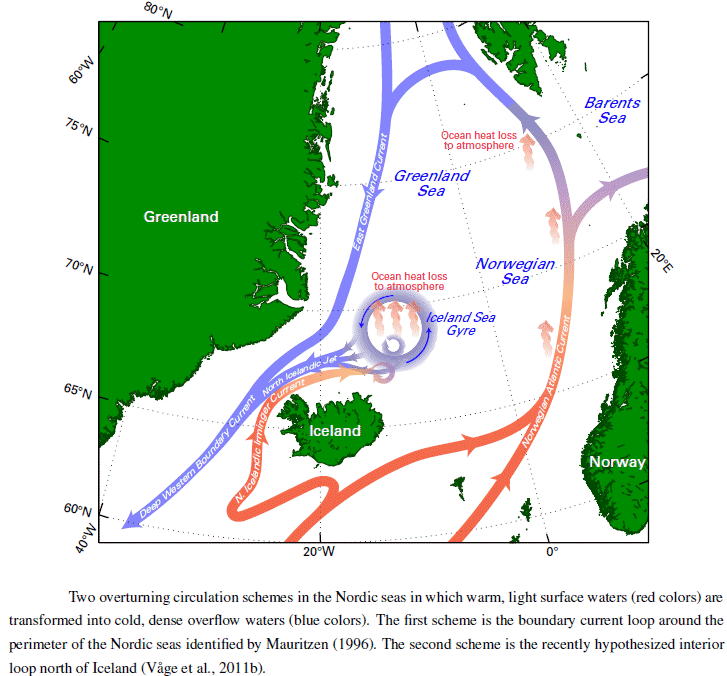
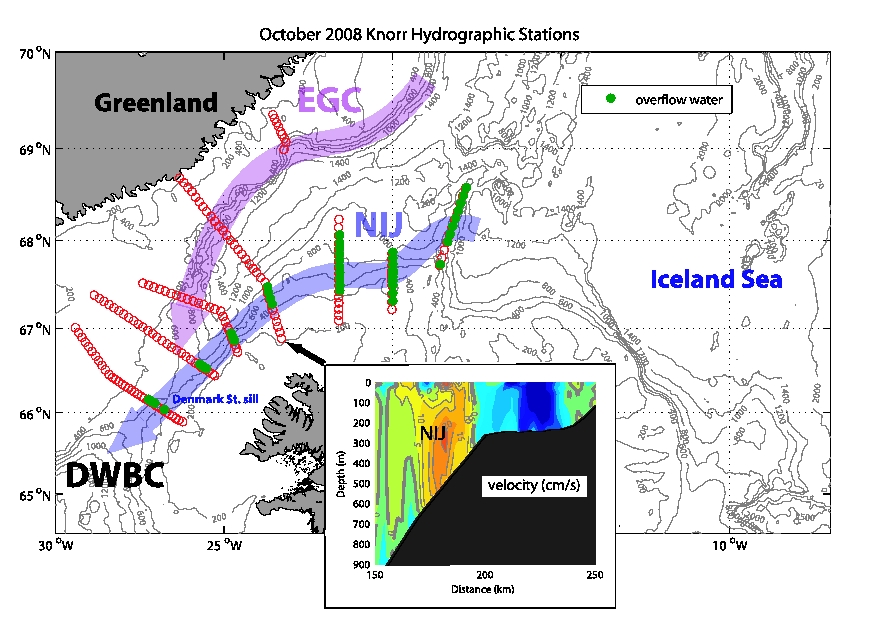
IS THE PRINCIPAL COMPONENT OF THE NORTH ATLANTIC OSCILLATION - NAO.The North Icelandic Jet is a deep-reaching current that flows along the continental slope of Iceland. North Icelandic Jet advects overflow water into the DENMARK STRAITand constitutes a pathway that is distinct from the East Greenland Current. It is a cold current that runs west across the top of Iceland, then southwest between Greenland and Iceland at a depth of about 600 meters (almost 2,000 feet).
North Icelandic Jet (NIJ), contributes to a key component of the Atlantic Meridional Overturning Circulation (AMOC), also known as the "great ocean conveyor belt," which is critically important for regulating Earth's climate. As part of the planet's reciprocal relationship between ocean circulation and climate, this conveyor belt transports warm surface water to high latitudes where the water warms the air, then cools, sinks, and returns towards the equator as a deep flow.
Crucial to this WARM-TO COLD oceanographic choreography is the DENMARK STRAIT Overflow Water (DSOW), , the largest of the deep, overflow plumes that feed the lower limb of the conveyor belt and return the dense water south through gaps in the Greenland-Scotland Ridge.
WHOI article :To the Denmark Strait
The Icelandic Jet is not only a major contributor to the conveyor belt, but the major source of the ocean's densest, coldest water.
DENMARK STRAIT IS BOTTLENECK ON THE SUPERHIGHWAY IN THE OCEANS GLOBAL CIRCULATION
Woods Hole Oceanographic Institution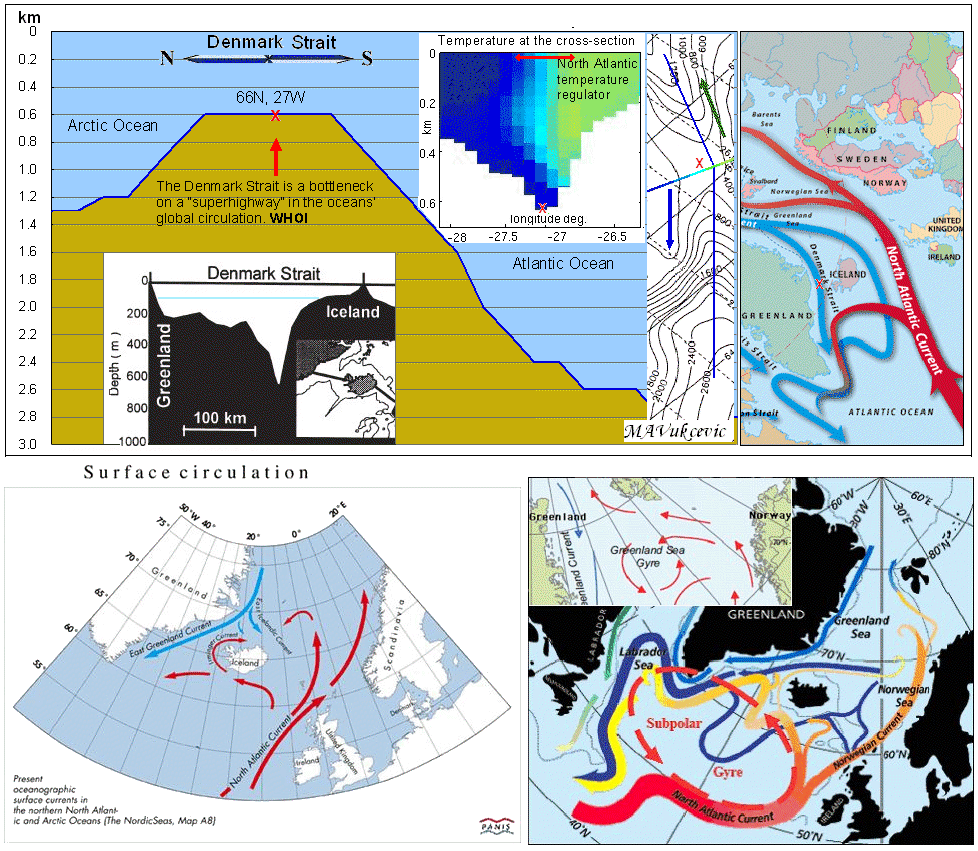
Denmark Strait is only 600m deep, about 200km of its breadth is covered with sediment 500m deep. Minor part of the sediment is from the Greenland icebergs, majority is from oozing magmatic tephra carried southwards from Kolbeinsey Ridge area, where crust is split by tectonic plates movement.
Although the Iceland’s active volcanoes number just over 1% of the world’s total, it is estimated that they produced more then 30% of the total lava since 1500 A.D. What is valid for 15 nearby active volcanoes it could be true for the hundreds of miles of permanent submarine magma flow..
When there is large movement, more sediment is built up blocking the cold Icelandic Jet Current, and the Subpolar gyre (further south) and the SST (AMO) get warmer. When tectonic action slows down erosion takes place, the IJC gets stronger, Subpolar gyre and the SST cool down as shown here: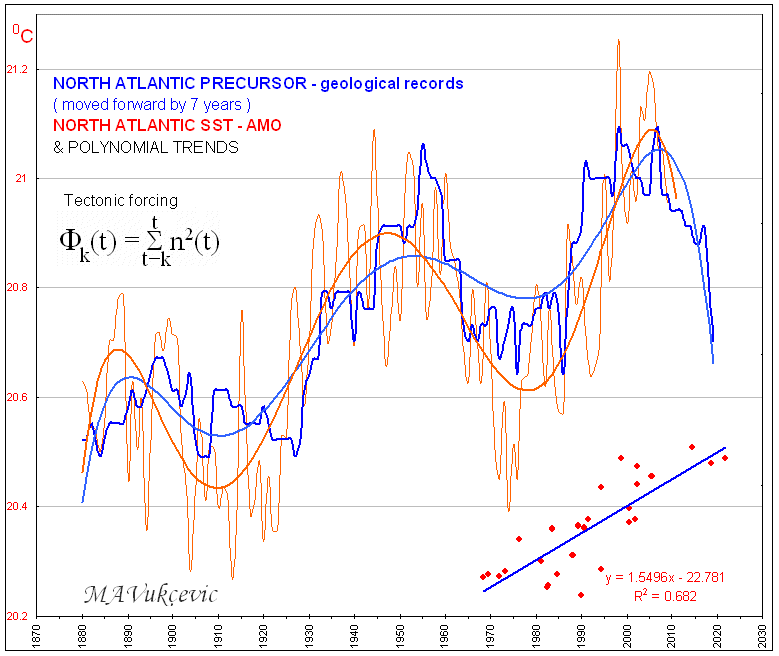
New discoveries in the Arctic Ocean including tectonic shifts of the Lomonosov microcontinent will eventually show to have an effect on the Arctic Ocean currents particular at the Beaufort Gyre system, that plays a flywheel role in stabilizing the climate of the entire Arctic region.
However all these changes are mostly within boundary set by the narrow Fram Strait which represents the unique deep water connection between the Arctic Ocean and the rest of the world oceans. Its bathymetry controls the exchange of water masses between the Arctic basin and the North Atlantic. The significant heat flux through water mass exchange and sea ice transport, i.e. transport of fresh water and sea ice southwards and transport of warm saline waters northwards, influences the thermohaline circulation at a global scale.
Silting and erosion of the Fram Strait could as important as that in the Denmark Strait, but for time being there is no data. Main difference is that the Fram Strait has a dip narrow channel, while the Denmark Strait is wide and shallow

Major mystery is why the geo-tectonics of the region correlates to the solar activity
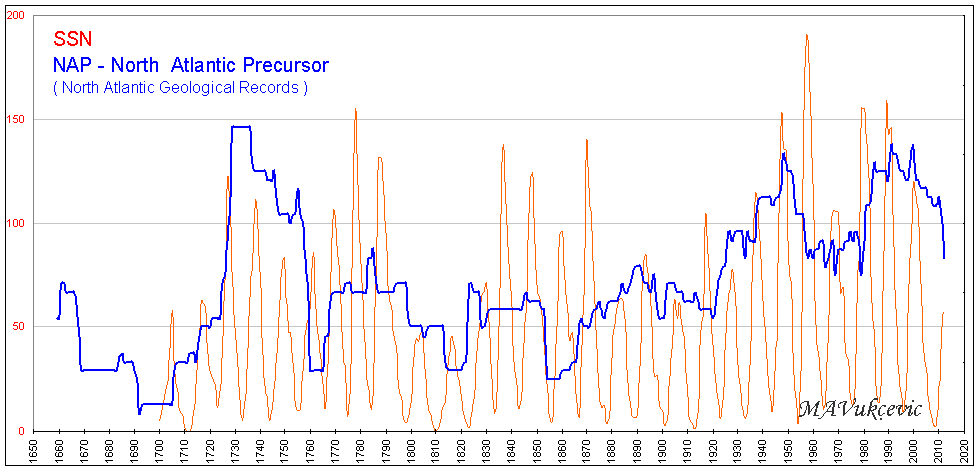
CET RECONSTRUCTION AND FORECAST
‘FUTURE IS COOL’
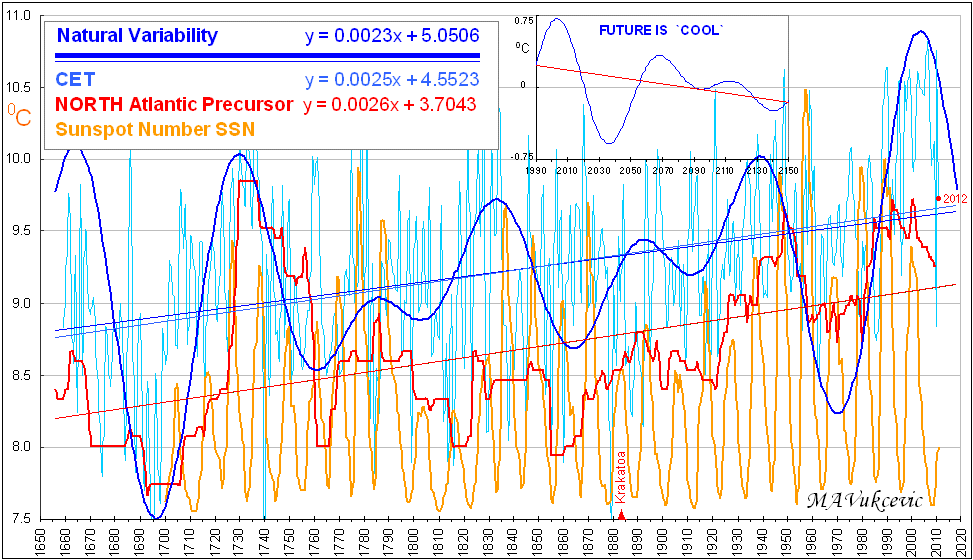
SUB-POLAR GYRE
The North Atlantic's Subpolar gyre (see the image above) is the engine of the heat transport across the North Atlantic Ocean. This is a region of the intense ocean - atmosphere interaction (see image below). Cold winds remove the surface heat at rates of several hundred watts per square meter, resulting in deep water convection. These changes in turn affect the strength and character of the Atlantic thermohaline circulation (THC) and the horizontal flow of the upper ocean, thereby altering the oceanic poleward heat transport and the distribution of sea surface temperature (SST).
The thermohaline forcing, associated with deep water convection, is thought to be the source of the 'Icelandic Low'. Icelandic Low is a semi-permanent, subpolar area of low atmospheric pressure in the North Atlantic Ocean. The strength of the Icelandic Low is the critical factor in determining path of the polar jet stream over the North Atlantic.

The Icelandic Low is a semi-permanent centre of low atmospheric pressure found between Iceland and southern Greenland. It is a principal centre of action in the atmosphere circulation of the Northern Hemisphere, associated with frequent cyclone activity.
North Atlantic Ocean atmospheric pressure system is dominated by Icelandic Low because of the intense ocean - atmosphere interaction. Heat loss to the atmosphere from the North Atlantic currents is at rates of several hundred watts per square meter, resulting in deep water convection - thermohaline forcing).
ICELANDIC LOW

Changes in Jet Streams trajectory are due to changes in the intensity of the Icelandic Low,
and consequently determine the type of North Atlantic Oscillation Icelandic Low is strongest during a Northern Hemisphere winter and early spring, centred over Iceland and southern Greenland, and is the dominate weather feature in the area. During the summer, it is weaker, less intense, and might divide into two parts. Then the Azores or Bermuda High becomes the dominate weather feature in the North Atlantic.
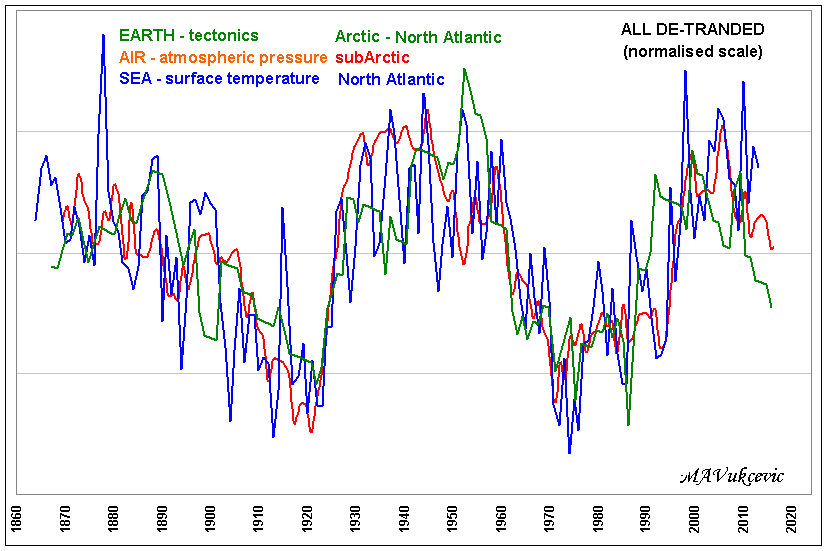
MAGNETIC FIELD CHANGE AT KOLBEINSEY RIDGE
AS A PROXY FOR GEOLOGICAL ACTIVITY
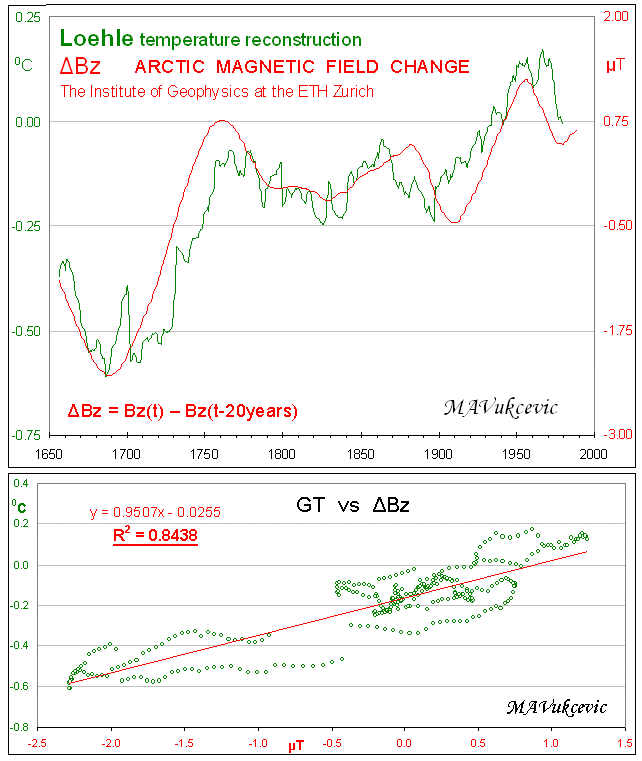
CET and GLOBAL TEMPERATURE
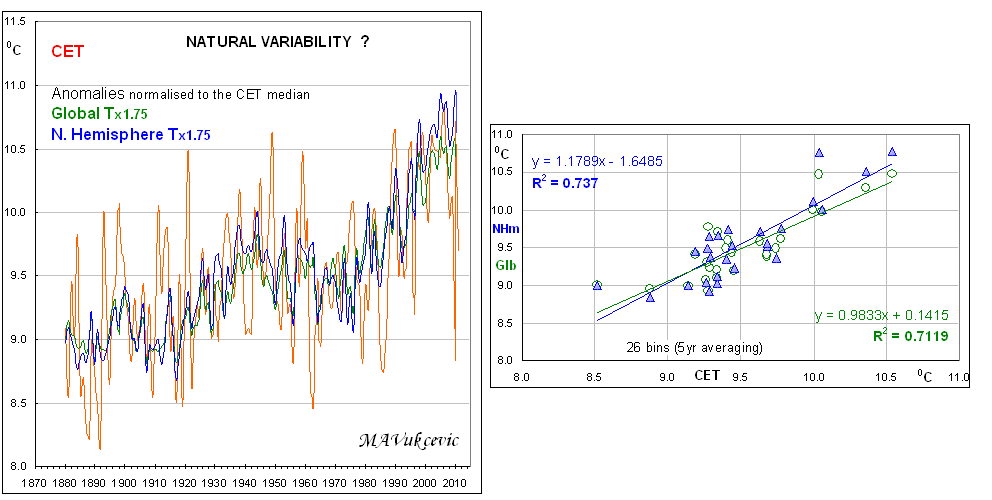
Graphs and Formulae